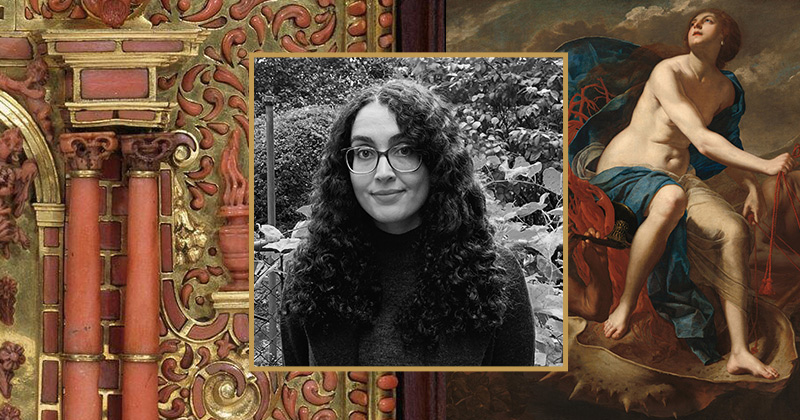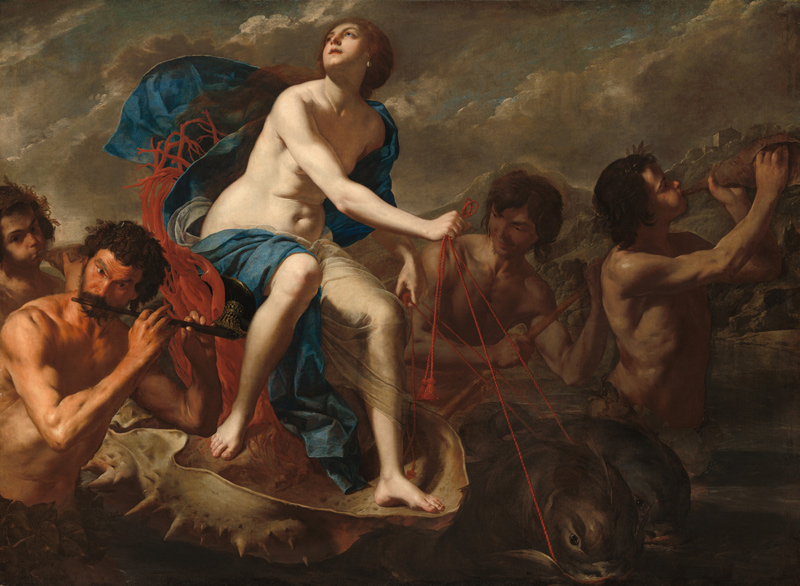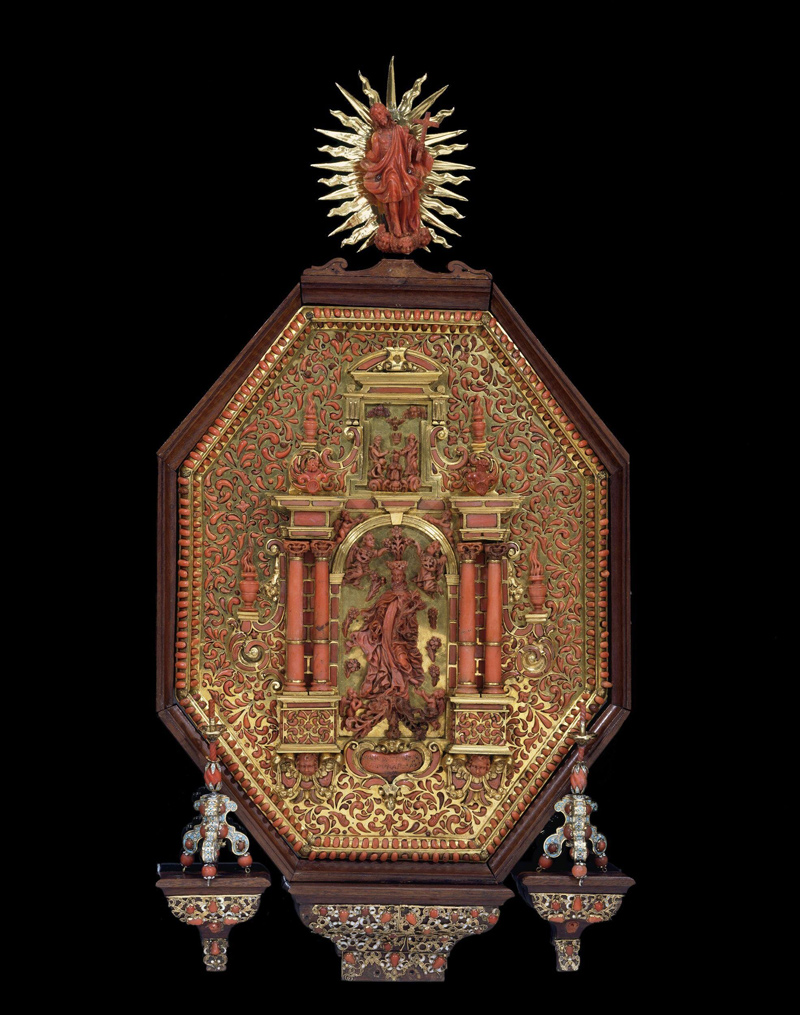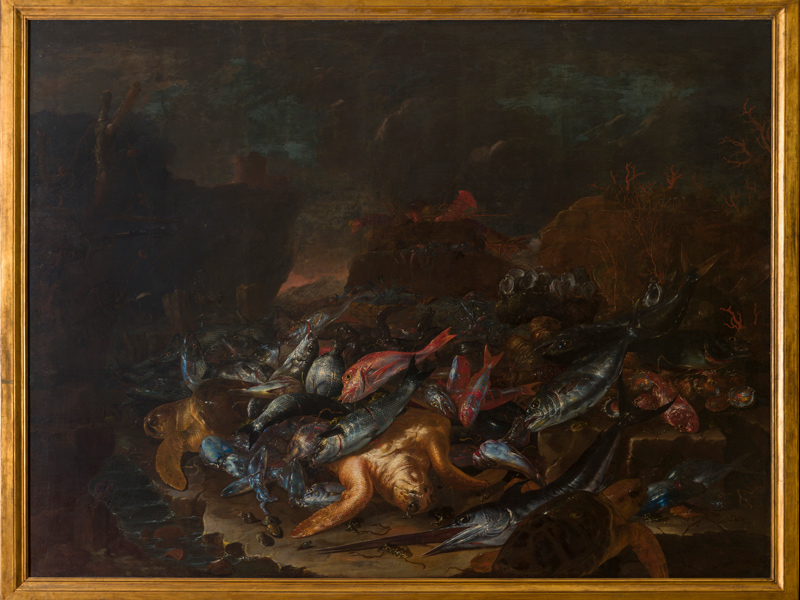


Harvest from the sea
Photos courtesy of Gabriella Johnson, the National Gallery, Victoria and Albert Museum in London and the Museo e Real Bosco di Capodimonte in Naples | Photo illustration by Jeffrey C. Chase August 10, 2023
Art history doctoral student wins the prestigious Rome Prize, an opportunity for focused research and direct observation
When University of Delaware art history doctoral student Gabriella Johnson selected a topic for her dissertation, she wanted to look beyond style, technique and attribution to examine what works of art can tell us about the culture and social history of the time and place where they were created. She turned to the sea for inspiration, and earned one of the most prestigious arts and humanities fellowships in the country for her choice.
Johnson received the 2023 Samuel H. Kress Foundation/Marian and Andrew Heiskell Pre-Doctoral Rome Prize in Renaissance and Early Modern Studies, one of only 36 fellowships awarded annually to American artists and scholars. The American Academy in Rome (AAR) received 988 applications for this year’s competition, and winners were selected by independent juries. “This class of Rome Prize winners once again includes some of America’s most gifted scholars and artists,” said Mark Robbins, AAR president and CEO.

The Rome Prize supports innovative and cross-disciplinary work in the arts and humanities. The award includes a stipend, meals, bedroom and workspace at the American Academy in Rome. During the nine-month fellowship, Johnson will have the opportunity to live and work in a scholarly community on the AAR campus, as well as the ability to conduct research in museums throughout Italy.
Johnson’s research focuses on three Italian objects from the early modern era of the 1600s that are all related to water but were created in different areas: a coral sculpture, a marine still life painting and a book of fossil illustrations.
“The sea is deeply woven into the culture of Italy in the 17th and 18th centuries,” she said. “Art reveals a lot about how people understood it.
“I picked these three case studies because they speak to period ideas about the transformative power of nature. They weren't just passive commodities that were harvested from the sea for import and export. Instead, they played an active role in shaping religion, science and geopolitics in the 17th century.”
What art reveals
One of Johnson’s early findings illustrates that the early modern period can teach us about modern issues:
“One of my case studies is coral from the city of Trapani, which is near Palermo in western Sicily,” Johnson said. “Trapani monopolized the coral trade from the 14th century through the 18th century, but the coral was harvested in an unsustainable way, and this changed the way artists were using coral as a material to make statues. It takes thousands of years for coral to fully develop and grow, and as it was eventually fished in much smaller, brittle branches, artists had to change techniques to adapt.”

In addition to the Trapani coral, Johnson’s research examines a Giuseppe Recco marine still life from Naples and a book of fossil illustrations published in 1670 by Sicilian artist and amateur naturalist Agostino Scilla.
“Marine still life was an incredibly popular genre in Naples, and I’ve always thought ‘why were these paintings of marine creatures so popular?’,” Johnson said.
To answer her own question, Johnson found references to fish in gastronomy, folklore, song and even religious practices.
To finish her dissertation, Johnson is examining Scilla’s work.
“He was the one of the first people in the Western world to publish what fossils actually are, rather than remnants from Noah’s flood or God’s abandoned attempts at creation,” she said. “I’m taking a critical look at his art in dialogue with his fossil illustrations.”
When in Rome
Thanks to the Rome Prize, Johnson’s time in Italy will provide direct access to the works she is studying.
“Studying a work of art in person has a completely different visual impact for many reasons, including a sense of scale,” Johnson said. “The Recco painting is monumental. I couldn’t appreciate that from a reproduction in a book. You also get a sense of a painter if you're looking at the actual painting — the painter's technique, brush work, how each fish is modeled.”
She added that it isn’t possible to fully reproduce a statue in a two-dimensional photograph. “The Trapani statues are made of coral that’s highly polished, so it becomes really reflective,” Johnson said. “But it's also paired with reflective copper elements and intricate silver filigree.”
Nothing substitutes for seeing these pieces in person.

Contact Us
Have a UDaily story idea?
Contact us at ocm@udel.edu
Members of the press
Contact us at 302-831-NEWS or visit the Media Relations website

